#otr x fafnir
Note
Hi! I want to ask you since you seem to know well about Fire emblem: is there real, blood-related canon incest? I read Camileo is semi-canon and they're half-siblings, is there someone else?
Yes, actually! Not as much canon bio incest in the more recent games (unless you count… whatever is going on with Rhea, but that’s its own can of worms), but very much so in some of the older games. The most notorious is fe4 (genealogy of the holy war). I’ve only played the beginning of it so my synopses may be a little inaccurate. And i’m putting all this under a cut because i rambled for too long :)
FE4 has:
eldigan and lachesis, where lachesis is stated IN the game to be in love with her brother and love him more than other men. his feelings on the matter are never addressed, but in the official manga, he returns her feelings and they very nearly have sex — the only reason he decides not to is that he knows he’s likely going to die soon and doesn’t want her to live with that sin alone. She has two children eventually, with fathers who are implied to be two specific men, but it seems she never really gets over her brother’s death. there’s a rumor that she was initially meant to be married to him, but the source of it is extremely suspect lol. since timing-wise her first son had to have been conceived sometime pretty close to eldigan’s death, i personally like to think he’s actually eldigan’s son ☺️
arvis and deirdre. this is like… the Plot of the game. arvis is born to a cursed bloodline where iirc they’re only allowed to have one child. deirdre has grown up secluded in a forest, separate from society. at the start of the game she marries sigurd, the protagonist of the first half, and they have a child. but she’s later kidnapped and has her memory wiped, so that she can marry arvis (who was not aware of that happening). they have twins, and then eventually it’s revealed that they are half siblings; the group that kidnapped her did so because of the cursed bloodline, and had her marry arvis with the hopes that their children would have the blood necessary to revive their ancient god. the whole thing is extremely tragic.
seliph and julia. this one’s a bit Less, but seliph is sigurd’s kid with deirdre and julia is arvis’s with deirdre. due to them starting at nearly maximum love points, there’s an exploit that lets you have them get married despite negative growths to their love :)
There’s more too: loooots of cousins you can have get married in the second half, as well as a pair who are kind of heavily implied to be long lost siblings but are “just distant relatives”
there’s also frejya in fire emblem heroes book 4 who only cares for her brother (because he was the only one kind to her as a child) and is jealous that he loves humans. so she decides to try and end humanity. the whole plot is her being a brocon. and in book 6, otr goes to GREAT lengths to prevent his adoptive brother from learning about his true past (that he came from another world where he has a family iirc) because he doesn’t want his brother to leave him.
not to mention in fates, corrin can marry all of the royal siblings. four of whom (xander, camilla, leo, elise) they grew up alongside and believed were their biological siblings until the start of the game. I think all four of them believed corrin was their bio sibling too, but that’s never made 100% clear. At the start, corrin learns they were kidnapped and are actually a half sibling of the hoshidan royal family (ryoma, hinoka, takumi, sakura) and that their real mother is the others’ stepmother. but corrin can also marry those 4. Turns out their father ISN’T corrin’s father, but only one of the routes actually talks about this in the plot. In the other route where these characters are an option, corrin does not know unless you choose to marry them. Ryoma has always known, but was told not to share that information with you, while the other three find out at the same time as corrin (from a letter from their late step mother). Basically, corrin can marry any of their adopted siblings OR step siblings, all of whom they thought for an extended period of time were bio siblings.
they play the “it’s pseudo incest so it’s ok” card but all of these S-supports involve some level of “i wish we were actually related” or “it’s ok, we can make it work…. wait we’re not related??” AND they generally still refer to you as their sibling after marriage, so it’s pretttttty incesty. tbh this is the best non-modded marriage for leo imo, all his s supports with women besides corrin feel so awkward and stilted and fake. he’s a siscon through and through <3 Then of course the other most prominent character, Azura, whom a lot of people marry just to avoid the incest, is revealed in the third route to be corrin’s first cousin.
so: yes, lots of canon incest :) there’s definitely more that i’ve missed
#shipcest#ask#eldichesis#arvis x deirdre#seliph x julia#frejya x freyr#otr x fafnir#long post#i’m so sorry lol i can’t shut up#not tagging all the corrin ships that’s too much effort#fire emblem#fates
12 notes
·
View notes
Photo

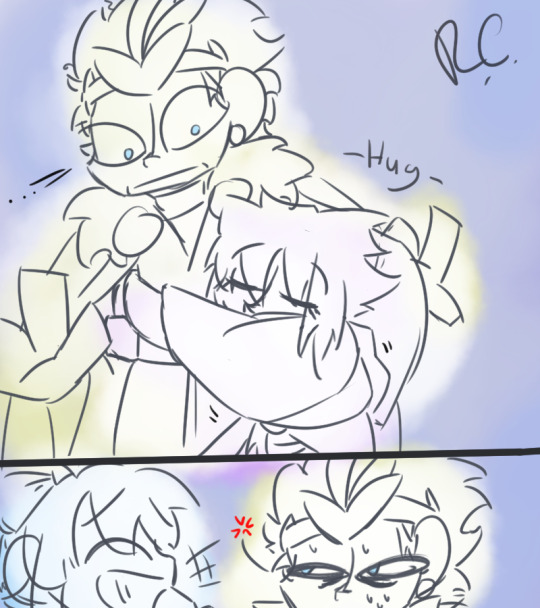
Otrs finally got his bro!!
#feh#fire emblem heroes#fafnir#otr#reginn#meant to make this closer to new years#but got like real sick and did not wanna qvq#anyway#hope you enjoyed#their together again :D#whether or not fafnir likes it X''D#ye!
10 notes
·
View notes
Text
Book V: Chapter 2 Reactions!


I WANT HIM ALREADY-
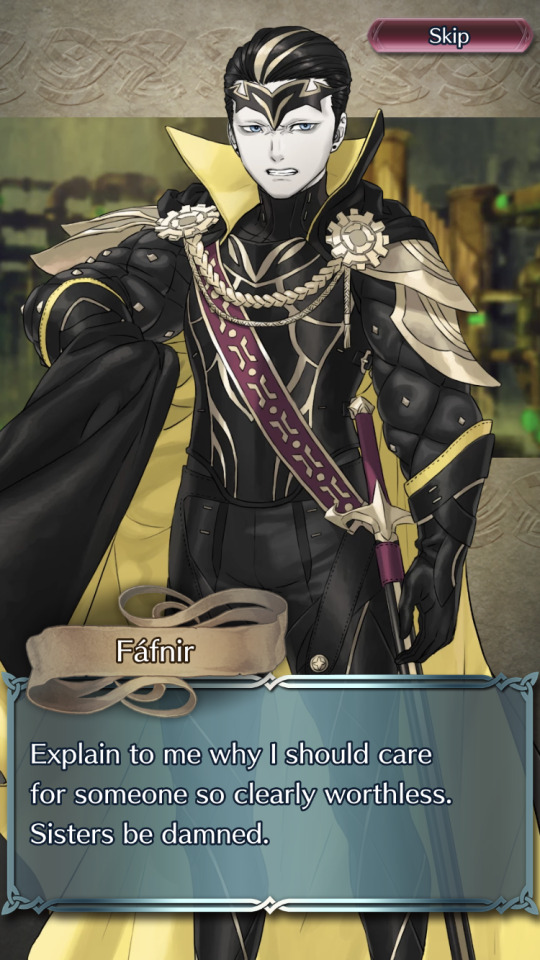
Ewwww he ugly-


Damn I take it back the heck- I sure as hope that’s the mind control talking, you crazy ass b-



I love him-
-
So... idk what’s happening lol
#fire emblem#fire emblem heroes#feh#fe#fe alfonse#feh alfonse#fe ótr#FeH ótr#FeH fáfnir#fe fáfnir#fe otr#FeH otr#feh fafnir#feh book 5#feh book v#book 5#book v#kiralfonse#kiran x alfonse#alfonse x kiran#fe kiran#feh kiran#fe summoner#feh summoner#alfonse x summoner#summoner x alfonse
92 notes
·
View notes
Text
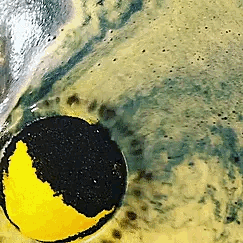





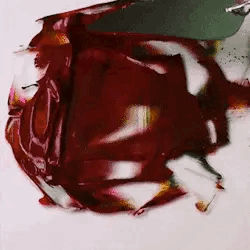
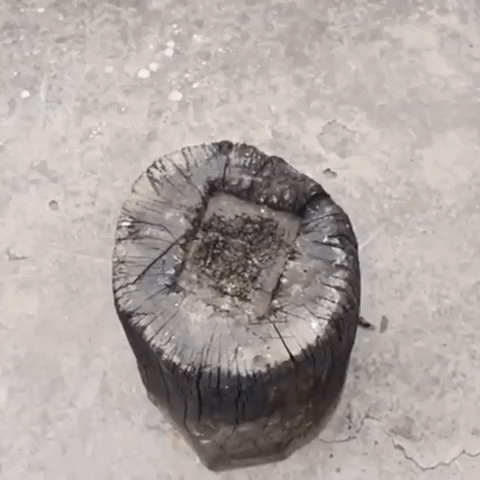
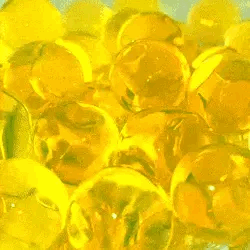

fafnir x otr (fire emblem heroes) + swords + yellow and maroon/red
- ❤️ 🗡 🤎
- 💛 🗡 💛
- 🤎 🗡 ❤️
#stim#mod stem#sharp objects /#hands /#swords#bath bombs#paint mixing#paint#orbeez#pouring#fafnir x otr#fire emblem heroes#feh otr#feh fafnir#yellow#red#gold#maroon#request#pro shippers please interact#proship#proshipper#proshipping#anti anti
19 notes
·
View notes
Text
ok not gonna lie i honestly wish i was joking
adcc x kasumiverse crossover thing who says crossovers are only for april fools nah were christmas special-ing this
-post b5. lumi, noct, and the other children, as well as poor children from other realms, have made a new home for themselves in the hospital/hostel of aurvandil’s aunt. reginn is helping to rebuild nidavelir, but due to commitments also spends a lot of time in askr. sindri as well is helping with the rebuilding, as is aurvandil. kasumi and squad are in askr again
-there’s a plot element. its kinda based on i think the black cauldron? its in two parts- a cup/goblet/chalice thing that can grant any wish, and a “lid” that can make so what is needed. anyways. both are missing and askr and literally everyone in the vicinity is after them.
-anyways while in askr, kasumi and chihaya catch a glimpse of otr and follow him, finding out he’s working with someone (tbd. maybe a bit villain from the heroes story, like freyja, or even antagonist like loki, or even a fe villain like gharnef or lyon. or the goblet is the villain. tbh thatd be the coolest imo) to use the goblet part, which he found, to bring back fafnir and make it so sindri and askr didn’t stop him before, as he hopes that fafnir won’t be taken from him. in hatred and bitterness he renounces reginn, the people of nidavelir, and everyone, attacking kasumi and chihaya as they hotfoot it out.
-despondent, the two head back, sad at the thought of “what will we tell reginn?” as well as worried for the future of nidavelir and the worlds in general. however, there is a mysterious vision. thing. idk. it could be lifthrasir, or it could be alcinous. it could even be cala but thats least likely. anyways they get possession of the lid of the goblet.
-at which point exposition fairy (not actually a fairy) arle arrives and explains the lid, and that it can put into being what they need. kasumi thinks back to an old ballad that she heard in izumo, and asks chihaya if he remembers- he does. arles like “wait what-” but then they all get like. swirly swirly magic.
-chihaya is past, like in the story. he shows otr his past but is kinda funny and not threatening, but begs him to help them and give his sister another chance. otr remembers his death, the awful treatment by reginn’s family and everyone involved in the coup, and his general hatred for everyone but fafnir and punches chihaya back to reality.
-arle is present. fitting with the story hes kinda like. not as involved as the other two but very no nonsense. he shows arle the children from the orphanage and the refugees of nidavelir, who, encouraged by reginn and sindri, reluctantly toast to him after fafnir (who they do for happily). arle reminds otr of his cruel words condemning the nidavelir people as a whole to death, and that he should not be so swift to deal out such statements, esp without knowing who he speaks of (ie. scrooges if they had better die they should do it). arle warns otr as well (i see an empty chair by the hearth) of the only future he sees for the children is the burnt rubble remains of the orphanage in nidavelir, and otr takes it as they never return and nidavelir is never restored.
-the last ghost, future, is kasumi, initially as greymask. i like to think shes like in the movie and has a glitzy suit and does a gospel song and its awesome. but then again i think she’d show otr the future- a huge, controlled and bestial fafnir destroying nidavelir shortly after the children return. the children cower in the orphanage, holding each other and fervently praying to survive as kasumis squad stand outside in a futile effort to save it. otr tries to reason with faf, but realizes he is beyond regaining himself, and realizes in his desire to make his brother only his own, he has destroyed and lost him completely. he sees his own torn cape, remains of armor on fafnir’s foot and realizes he has been killed in the process once again. he pleads to future!kasumi to not let this come to pass, reminded of present!arle and past!chihaya’s words. kasumi says the famous “you know all the angles. you figure it out” line and sends him back to wake up
-otr for his part stops the plot, destroying the goblet by his own hands before it can be used by himself or anyone (idk. he wishes for the goblet’s destruction). he prolly plays it off like “im not going to just get this through a weak willed wishing token”. ofc the villain is angered and attacks him, but kasumi squad arrive in time? idk. itd be most fitting if cala/alcinous/lifthrasir whoever intervenes.
-kasumi and friends go to the orphanage in jotunheimr to celebrate winter festival with aurvandil and the kids. but as a surprise guest, otr arrives, bringing with him nidavelir sweets for the kids and most of all, warm wishes of hope for everyone. even as the kids tackle him he says its just for today. he’s invited to stay but he declines, finally accepting reginn’s invitations to visit.
0 notes
Text
Norwegian / old norse names and places
Every now and then I come across a book, movie, TV-series, fanfic, game or whatever, that mention a fictional "Norwegian" or "norse" place or person, and it just sounds so wrong it makes me either cringe or ROFL. Really. I still haven't recovered from the 1995 X-files episode, "Død Kalm", which took us to the port of "Tildeskan" where we met "Henry Trondheim", "Halverson" and "Olafsson".
Hopefully this list will keep others from being that “creative” with names. :)
Common names for places, towns and villages in Norway
These names are very generic and suitable for a place, village or town anywhere (and pretty much any time) in Norway. Mix and match prefixes with suffixes for diversity.
Bonus: All of these can also be used as surnames.
Name (meaning) - usage
Nes (headland, cape, ness) - Standalone
Bø (fenced-in field on a farm) - Standalone
Fjell (mountain) - Standalone or prefix/suffix: Fjell- / -fjell
Haug (small hill / large mound) - Standalone or prefix/suffix: Haug- / -haug
Vik, Viken, Vika (inlet, the inlet, the inlet) - Standalone or prefix/suffix: Vik- / -viken / -vika
Ås, Åsen (hill, the hill (larger than "Bakken")) - Standalone or prefix/suffix:
Dal, Dalen (valley, the valley) - Standalone or prefix/suffix:
Berg (small mountain) - Standalone or prefix/suffix: Berg(s)- / -berg
Sand (sand) - Standalone or prefix/suffix: Sand- / -sand
Strand (beach) - Standalone or prefix/suffix: Strand- / -strand
Li (hill) - Standalone or prefix/suffix: Li- / -li
Gran (spruce) - Standalone or prefix: Gran-
Bratt (steep) - prefix only: Bratt-
Myr (bog, mire) - prefix only: Myr-
Neset, Nesset (the headland, the cape, the ness) - Standalone or suffix: -neset / -nesset
Odden (foreland, headland) - Standalone or suffix: -odden
Våg (cove, bay) - Standalone or suffix: -våg
Lund (grove) - Standalone or suffix: -lund
Sund (sound, strait) - Standalone or suffix: -sund
Skog (forest) prefix/suffix: Skog- / -skog
Øy (island) prefix/suffix: Øy- / -øy
øya (the island) - suffix only: -øya
bakken (the hill) - suffix only: -bakken
gard / gård / gården (farm / farm / the farm) - suffix only: -gard / -gård / -gården
elv, -elva (river, the river) suffix only: -elv / -elva
stad (old word for town/place) suffix only: -stad
vannet (the lake) - suffix only: -vannet
Common words that can be used as prefix to any of the suffixes above
Svart- (black)
Lille- (little/small)
Sol- (sun)
Brei-/Bred- (wide)
Stor- (big)
Lang- (long)
Common Norwegian surnames (contemporary)
Heredatory surnames didn't become mandatory in Norway until 1923. Many took the name from the farm or place they lived, or just changed their primary patronyms into hereditary patronyms. Example: Helgessønn/Helgesdatter (son of Helge / daughter of Helge) became Helgesen.
Alm
Andersen
Anderssen
Antonsen
Aspelund
Bakke
Bakken
Bang
Berg
Bjerkan
Bråthen
Christensen
Corneliussen
Dahl
Dahlberg
Danielsen
Dyrnes
Dørum
Eide
Ellingsen
Erdal
Eriksen
Falch
Fredriksen
Foss
Fure
Fylling
Gabrielsen
Gran
Grønning
Halvorsen
Hansen
Hanssen
Hay
Hoff
Holm
Holt
Husby
Isaksen
Iversen
Jacobsen
Jensen
Jenssen
Johansen
Karlsen
Klausen
Konradsen
Kristensen
Kristiansen
Larsen
Larssen
Lie
Lien
Lund
Løvold
Magnussen
Meyer
Mikalsen
Mo
Moen
Myhre
Myklebust
Mørk
Ness
Nilsen
Olavsen
Olsen
Paulsen
Pettersen
Prestegård
Rasmussen
Riise
Rogstad
Ruud
Simonsen
Solbakken
Solli
Stokke
Strøm
Sund
Svendsen
Thorvaldsen
Torp
Thune
Tønnesen
Ueland
Ulven
Urdal
Vik
Vinje
Wahl
Wik
Wilhelmsen
Zakariassen
Ødegård
Årseth
Årvik
Ås, Aas
Åsen, Aasen
Common Norwegian names -- 1980 - present
Men
Anders
André
Andreas
Are
Arne
Atle
Bjørn
Cato
Chris
Christian, Kristian
Christoffer, Kristoffer
Daniel
David
Dennis
Elias
Emil
Espen
Erik, Eric
Eirik
Fredrik
Filip
Geir
Harald
Helge
Hans
Henning
Håkon, Haakon
Håvard
Isak
Jan
Joachim
Johan
Johannes
John, Jon
Johnny
Jonas
Jonathan
Kim
Kristian, Christian
Kristoffer, Christoffer
Lars
Lucas, Lukas
Mads, Mats
Magnus
Martin
Michael, Mikael
Morten
Niklas
Nils
Odin
Ole
Ove
Paul
Per
Peter, Petter
Preben
Pål
Richard, Rikard
Roger
Sebastian
Simen
Simon
Sindre
Sondre
Stian
Terje
Thomas
Thor, Tor
Thore, Tore
Vegard
Werner
William
Øystein
Åge
Åsmund
Women
Andrea
Ane, Anne
Anette, Annette
Annika, Anniken
Astrid
Bente
Camilla
Carina
Cathrine
Celine
Charlotte
Christin, Kristin
Christina, Kristina
Christine, Kristine
Elin, Eline
Elise
Elisabeth
Emilie
Eva
Frida
Grete, Grethe
Hanne
Hege
Heidi
Helene
Hilde
Ida
Ine
Ingrid
Ingvill, Ingvild
Isabel, Isabell, Isabelle
Iselin
Jannicke
Janine
Jeanette
Jennie, Jenny
Julia, Julie
Karoline (Kine)
Katrin, Katrine
Kristin, Christin
Lea, Leah
Lena, Lene
Linda
Line
Linn
Linnea
Lise, Lisa
Liv, Live
Mai, May
Maja
Malin
Margrete, Margrethe
Mari, Maria, Marie
Mariann, Marianne
Marte, Marthe
Mette
Monica
Nina
Nora
Oda
Pia
Ragnhild
Randi
Rikke
Sara, Sarah
Silje
Siv
Stina, Stine
Susann, Susanne
Tanja
Tina, Tine
Tiril
Tone
Trine
Vilde
Vera
Veronica
Wenche
Åse
Åshild
Common Norwegian names - 1800 - 1980
Men
Aksel
Albert
Anders
Andreas
Anker
Ansgar
Arne
Arnt
Arve
Asle
Atle
Birger
Bård
Charles
Edmund
Edvard
Egon
Erling
Even
Fred
Fredrik
Frode
Geir
Georg
Gunnar
Gunvald
Gustav
Harald
Helge
Hilmar
Håkon, Haakon
Ivar
Ingvar
Jens
Jesper
Jørgen
Joakim
Karl
Karsten, Karstein
Kjell
Klaus
Kolbein
Kolbjørn
Kristian
Kåre
Lars
Lavrans
Leif
Lossius
Ludvig
Magne
Magnus
Nikolai
Nils
Odd
Oddvar
Odin
Ola
Olai
Olaf
Olav
Ole
Omar
Oscar, Oskar
Peder
Per
Petter
Philip, Phillip
Pål
Ragnar
Rikard
Roald
Roar (also Hroar)
Rolf
Rune
Sigurd
Sigvard, Sigvart
Simon
Svein
Sverre
Tarjei
Terje
Toralf, Thoralf
Torbjørn, Thorbjørn
Torleif, Thorleif
Torstein, Thorstein
Torvald, Thorvald
Trond
Ulf
Ulrik
Valdemar
Wilhelm
Willy
Åge
Women
Albertine
Alice, Alise
Alma
Anita
Anna
Annbjørg
Asbjørg
Astrid
Aud
Bente
Berit
Birgit
Birgitte
Bjørg
Bjørgun
Bodil
Borghild
Dagny
Dagrun
Edel
Ella
Ellen
Elsa
Fredrikke
Frida
Gerd
Gjertrud
Gunhild
Gyda
Hanna, Hannah
Helga
Henny
Herdis
Hilda
Hilde
Hjørdis
Ingeborg
Inger
Irene
Johanna, Johanne
Jorun, Jorunn
Josefine
Judith
Kari
Karin
Kirsten
Kitty
Kjersti
Laila
Lilli, Lilly
Lisa, Lise
Liv
Lovise
Mathilde
Margaret
Marit
Martha
Molly
Nanna
Oddrun
Oddveig
Olga
Ragna
Ragnhild
Rigmor
Sara
Signe
Sissel
Solbjørg
Solveig
Solvår
Svanhild
Sylvi
Sølvi
Tora
Torhild, Toril, Torill
Torun, Torunn
Tove
Valborg
Ylva
Åse
Åshild
Names usage
Double names, like Ragnhild Johanne or Ole Martin are common in Norway. Just keep them as two names and don't use "-", and you'll be safe, even if it ends up a tongue twister. Using only one of two given names is also common practice.
In Norway everyone is on a first name basis. Students call teachers and other kids' parents by their first name, workers call their boss by their first name, we call our Prime Minister by her first name (journalists will use her title when speaking to her though). Some senior citizens still use surnames and titles when speaking of or to people their own age.
There are some exceptions. For example, a doctor may be referred to as Dr. Lastname when we speak of them, but first name is used when speaking to them. A priest is "the priest" when speaking of him/her and their first name is used when spaking to them. In the millitary only surnames (and ranks) are used. If you meet Harald, the King of Norway, in an official setting you will refer to him as "Kongen" (the king). If you run into him at the gas station, or while hiking, he is "Harald".
If you don't know someone's name it is okay to use their title, or just say "you".
Names for pets (contemporary)
Dogs
Laika (f)
Bamse (m) (bear)
Tinka (f)
Loke/Loki (m)
+ characters from TV/film/books...
Cats
Melis (m/f) (powdered sugar)
Mango (m/f) (mango)
Pus (f) (kitty)
Mons (m) (tomcat)
Nala (f)
Pusur (m) (Garfield)
Felix (m)
Simba (m)
+ characters from TV/film/books...
Horses
Pajazz (m)
Mulan (f)
Balder (m) - cold blood
Kompis (m) (pal)
Freya (f) - cold blood
+ characters from TV/film/books...
Rabbits
Trampe (m) (Thumper)
Trulte (f)
+ characters from TV/film/books...
Cows (yes, I am serious)
Dagros
Rosa
Mira
Luna
Sara
+ characters from TV/film - Disney is popular, as are the Kardashians :)
Road and street names
Storgata (usually the main street)
Kongens gate (the king's street)
Dronningens gate (the queen's street)
Jernbanegata (railroad street)
Jernbaneveien (railroad road)
Sjøgata (ocean street)
Sjøveien, Sjøvegen (ocean road)
Skolegata (school street)
Torvgata (plaza street)
Industrigata (industrial street)
Industriveien (industrial road)
Prefixes
Blåbær- (blueberry)
Bringebær- (raspberry)
Bjørke- (birch)
Aspe- (asp)
Kastanje- (chestnut)
Solsikke- (sun flower)
Blåklokke- (blue bell)
Nype- (rosehip)
Kirke- (church)
Park- (park)
Suffixes
-veien, -vegen (the road)
-stien (the path)
Other
Torvet (the plaza) - standalone or suffix: -torvet
Havna (the port) - standalone or suffix: -havna
Kaia (the port) - standalone or suffix: -kaia
Safe solution: use a first name or surname as prefix.
Old norse
Men’s names
Agnarr (Agnar)
Alfr (Alf)
Ámundi (Amund)
Ánarr
Árngrimr (Arngrim)
Askr (Ask)
Auðun (Audun)
Baldr (Balder)
Beinir
Bjørn
Burr
Borkr
Dagfinnr (Dagfinn)
Davið (David)
Drengr
Durinn
Einarr (Einar)
Eirikr (Eirik)
Eivindr (Eivind)
Erlingr (Erling)
Fafnir
Flóki
Freyr (Frey)
Fuldarr
Galinn
Gautarr (Gaute)
Gegnir
Geirr (Geir)
Glóinn
Grímarr (Grimar)
Hafli
Hakon
Hallsteinn (Hallstein)
Haraldr (Harald)
Haukr (Hauk)
Heðinn (Hedin, Hedinn)
Helgi (Helge)
Hrafn, Hrafni (Ravn)
Hrafnkell (Ravnkjell)
Iarl (Jarl)
Ingolfr (Ingolf)
Iuar (Ivar)
Jafnhárr
Jón
Jóngeirr
Kál
Kiaran
Klaus
Knútr (Knut)
Kolgrimr (Kolgrim)
Kolr (Kol)
Leifr (Leif)
Loki
Lyngvi
Magnus
Mikjáll (Mikal, Mikkel)
Mór
Morði
Nesbjørn
Nokkvi
Oddr (Odd)
Oddbjørn
Oðin (Odin)
Olafr (Olaf)
Ormr (Orm)
Otr
Ouden
Pálni
Pedr
Ragnarr (Ragnar)
Ragnvaldr (Ragnvald)
Randr (Rand)
Róaldr (Roald)
Rólfr (Rolf)
Salvi
Sigarr (Sigar)
Sigbjørn
Sigurðr (Sigurd)
Skarpe
Snorri (Snorre)
Steinn (Stein)
Sveinn (Svein)
Teitr
Þor (Thor/Tor)
Þórbjørn (Thorbjørn/Torbjørn)
Þorsteinn (Thorstein/Torstein)
Tryggr (Trygg)
Týr
Ulfár
Ulfheðinn (Ulvhedin)
Ulfr (Ulf)
Vakr
Vani
Veigr
Viðarr (Vidar)
Yngvarr (Yngvar)
Æsi
Women's names
Anna
Arnfriðr (Arnfrid)
Ása
Bera
Bergdís (Bergdis)
Biørg (Bjørg)
Cecilia
Cecilie
Christina
Dagný (Dagny)
Dagrún (Dagrun)
Dís
Dísa
Edda
Elin
Ellisif (Ellisiv)
Freyja (Freya)
Friða (Frida)
Frigg
Gerðr (Gerd)
Gertrud
Grima
Gyða (Gyda)
Hadda
Hallbéra
Hallkatla
Herdís (Herdis)
Hildigunnr (Hildegunn)
Huld
Hvít
Ida
Iðunn (Idun, Idunn)
Ingríðr (Ingrid)
Johanna
Jórunn (Jorun, Jorunn)
Juliana
Katla
Katrine
Kristín (Kristin)
Leikný (Leikny)
Lif (Liv)
Magnhildr (Magnhild)
Mjøll
Myrgiol
Nál
Nanna
Nótt
Oda
Oddný (Oddny)
Ólaug (Olaug)
Rafnhildr (Ragnhild)
Rán
Rannveíg
Ríkví (Rikvi, Rikke)
Rúna (Runa)
Roskva
Sága (Saga)
Sif (Siv)
Sigriðr (Sigrid)
Skaði (Skadi)
Skuld
Svana
Sýn
Solveig
Tekla
Tóra (Tora)
Trana
Ulfhildr (Ulfhild)
Una
Urðr (Urd)
Valborg
Vigdís (Viigdis)
Vírún
Yngvildr (Ingvill, Ingvild)
Yrsa
Bynames
Bynames, or nicknames, could be neutral, praising or condescending. Usually bynames described a person's
body, bodyparts, bodily features
age
kinship and descent
territorial origin
knowledge, belief, spirituality
clothing, armour
occupation, social position
nature
Examples:
Eirik Blodøks (Eirik Blood-Axe), Gammel-Anna (old Anna), Halte-Ása (limping Ása).
I suggest that you stick with English for bynames, or use (relatively) modern language if you are writing in Norwegian.
Surnames
Surnames weren't really a thing until 1923 when they became mandatory. Before 1923 patronyms (son/daughter of) were used, and the name of the farm you lived on was often added as an address.
For instance: Helgi Eiriksøn (Helgi, son of Eirik), who lived at the farm called Vollr (grass field), would be called Helgi Eiriksøn Vollr. If he moved to the farm called Haugr his name would change to Helgi Eiriksøn Haugr.
Patronyms
Men: Use father's first name and add -sen /-son /-sønn
Women: Use father's first name and add -dotter / -dottir / -datter
Farm names
Farm names were usually relevant and derived from either the location, a nearby landmark, nature or from occupation.
I suggest you stick with the modern forms for farm names.
Old Norse (meaning) - modern
Bekkr (stream) - Bekk, Bekken
Dalr (valley) - Dal, Dahl
Horn (horn) - Horn
Vollr (field) - Vold, Volden
Lundr (grove) - Lund
The list of common names for places/villages/towns is still valid, although the spelling is modern. Just keep it simple and make "clever" combos based on meaning.
535 notes
·
View notes
Photo
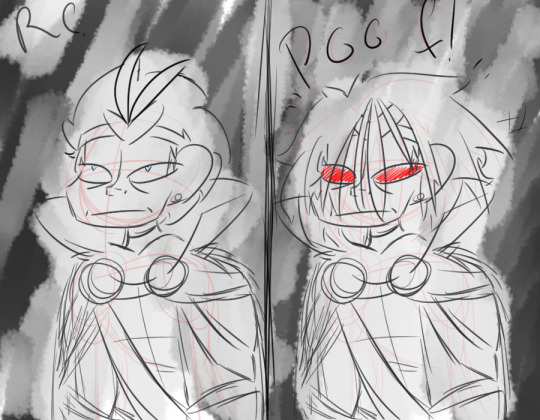
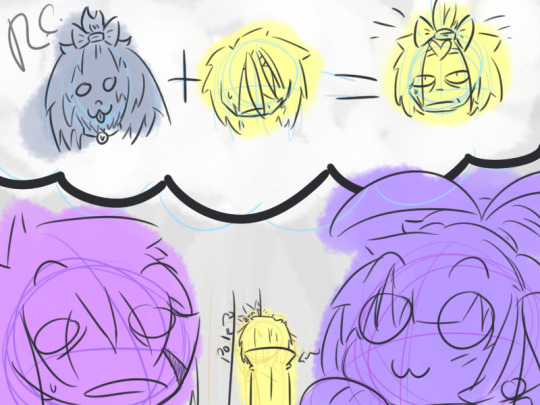
Ok so hear me out-
#feh#fire emblem heroes#fafnir#otr#reginn#fafnirs hair#out of all the things to be excited about tomorrow#this is what i focus on#X''D#hope you enjoyed#i have a problem#ye!
16 notes
·
View notes